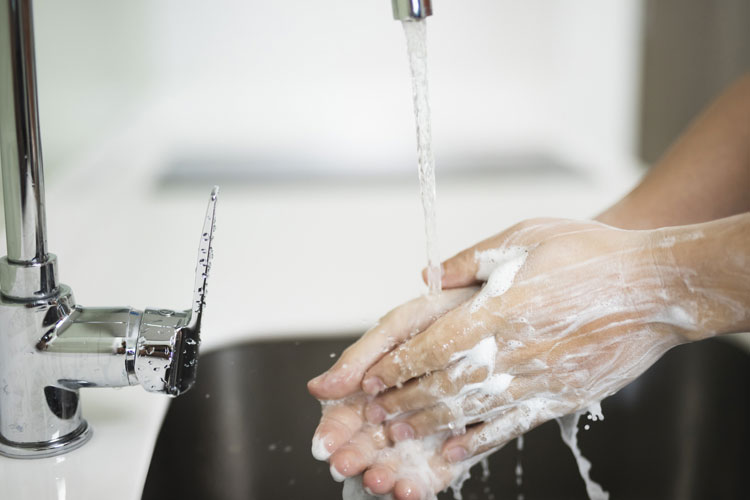
Over 175 million Americans have been asked to stay home by their elected officials to combat the dramatic spread of the COVID-19 coronavirus that is sweeping the globe, but is simply staying put enough for you to combat the virus?
Since America’s past-time is sports but its passion is statistics, here are some numbers:
-
-
-
17 states have issued “stay-at-home” orders implying residents only leave for groceries, exercise, and “essential” jobs. These states are California, Connecticut, Delaware, Hawaii, Illinois, Indiana, Louisiana, Massachusetts, Michigan, New York, New Jersey, New Mexico, Ohio, Oregon, Washington, Wisconsin, and West Virginia.
-
Almost 50% of the United State’s population live within these 17 states.
-
25,000+ cases have been confirmed in New York state alone.
-
1st documented case of the novel coronavirus was confirmed on January 20,2020 in Washington (state).
-
43,024 Americans have been diagnosed with the coronavirus as of March 23, 2020.
-
-
Lawmakers in Washington D.C. are currently debating a $2 trillion rescue package for the American economy which is suffering ahead of millions of workers told to stay home to bottleneck the outbreak.
These numbers are historic and many of the state orders have been issued within the last 7 days. Government officials from senators to the president himself have called the coronavirus pandemic the greatest struggle the American people have had to endure since World War II. Americans do not have a lot of experience fighting a war at home, and this battlefield occurs in the 6-foot gap we try to separate ourselves from the potentially infected in a tactic dubbed “social distancing”. You might think that we have been preparing for this battle for an entire generation, what with the video games, social media, and the internet all but severing any real “need” to go out and have a face-to-face conversation with one another. Yet when our leaders ask us to embrace those weapons of mass seclusion, our public has decided that now more than ever they miss the fresh air and want to walk in that incredible yellow circle of light in the sky instead of sitting in front of that old-fashioned rectangular blue-hue of the monitor.
For those who choose to follow the advice from the CDC in doing their part to stay healthy and fight back against the pandemic, here are tips to help prevent infection:
Safe Distance
The virus spreads mostly through person-to-person contact from droplets through acts such as sneezing and coughing. Try to maintain a safe distance of 6-feet between yourself and others. Avoid contact with anyone who is sick.
Clean Hands
Try to avoid touching your face. Your nose, mouth, and eyes especially especially with unwashed hands. Wash your hands throughout the day for at least 20 seconds each time with hot water and soap. If soap and water are not available, use hand sanitizer with at least 60% alcohol.
The Extra Mile
If you are sick, stay home unless you leave to get medical attention. Do not increase the chances of others in the community to contract the disease by leaving your home.
Cover your coughs and sneezes with a tissue and throw it away after use. Wear a face mask if you’re in spaces surrounded by others.
No Vaccine
There is no vaccine yet for the coronavirus and the numbers show that the virus has great potential to spread rapidly. Do your part in helping to prevent the spread of the virus or acquiring it. Remember that not all individuals who have the virus show systems or become ill, they still have potential to spread it to others so you can never be too cautious.
For information go to the Center for Disease Control’s website and learn more to help.
RELATED ARTICLES
Recent Posts
- Major Theft Ring Busted: Over $200,000 in Stolen Lego Sets Recovered in Eugene, Oregon
- Judge Denies Texas’ Bid to Shut Down Migrant Shelter Network in El Paso
- Single Mother in Memphis Seeks Help for Troubled Son Amid Rising Concerns
- California’s Proposition 47 Reform Sparks Intense Political Debate Over Public Safety
- U.S. Man’s Social Security Benefits Denied Over Citizenship Confusion
Categories
Our Supporters
Gold Supporters
Christopher Simon – Atlanta Truck Accident Lawyer
Skiver Law Firm – Phoenix Truck Accident Lawyer
Winer, Burritt & Scott, LLP – Los Angeles Clergy Abuse Law Firm
Michael E. Fenimore P.A. – Pensacola Car Accident Lawyer
Pillsbury & Coleman, LLP – San Mateo Long Term Disability Lawyer
The Law Office of Randall J. Wolfe, P.C. – Oregon City Personal Injury Lawyer
Davies Hothem Injury Law – Buford, GA Car Accident Attorney
Houston Federal Criminal Defense Attorney
Darrow Law Firm – Houston Federal Crime Lawyer
Kansas City Personal Injury Lawyer
Atlanta Truck Accident Attorney
Aitken *Aitken* Cohn Trial Lawyers – Santa Ana Personal Injury Attorneys
Dawson Law Group- Portland Personal Injury Attorneys
CT Mediation Center- New Haven Family Law Attorney
Little Rock Personal Injury Lawyer
Katy Car Accident Lawyer
Franklin Divorce Attorney
Palermo Law- Long Island Personal Injury Lawyer
Dan Rose – San Francisco Car Accident Attorney
Taylor Siemens – Liberty, MO Personal Injury Attorneys
Pfeifer Law Firm – Little Rock Car Accident Lawyer
Walkup, Melodia, Kelly & Schoenberger – San Jose Car Accident Attorney
Solomon, Dwiggins, Freer & Steadman – Las Vegas Business Litigation Lawyer
Roane Law – Asheboro NC Car Accident Lawyer
Dorsch Law Firm – Overland Park Estate Planning Attorney
The Tennessee Sledgehammer – Hermitage, TN Car Accident Lawyer
Cook Law Group – Gainesville, GA Car Accident Lawyer
Simon Bridgers Spires – Atlanta Personal Injury Lawyer
Injury Law Associates – Kansas City Motorcycle Accident Lawyer
Potts & Potts – Honolulu Personal Injury Attorney
